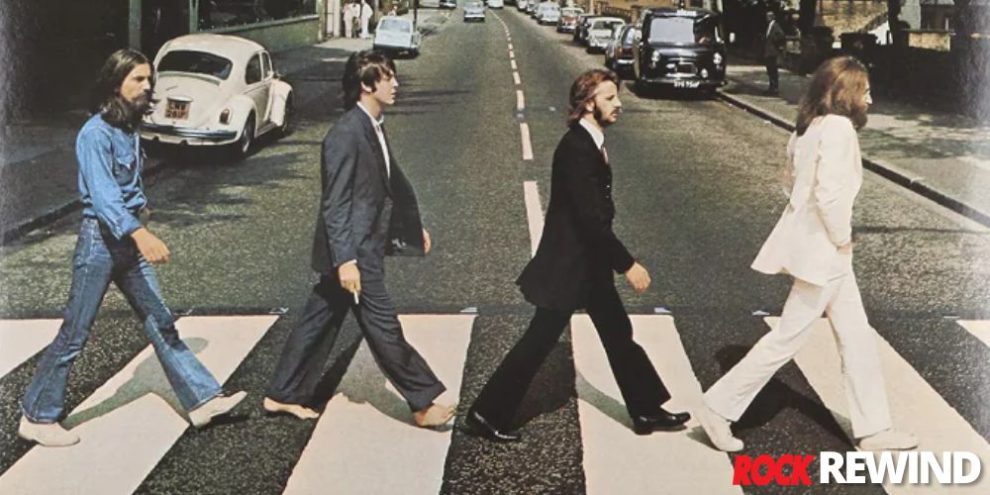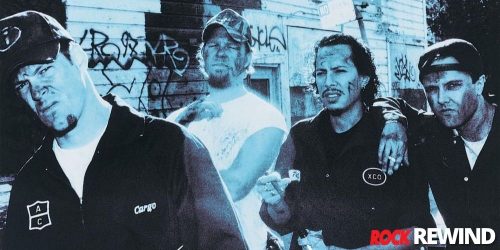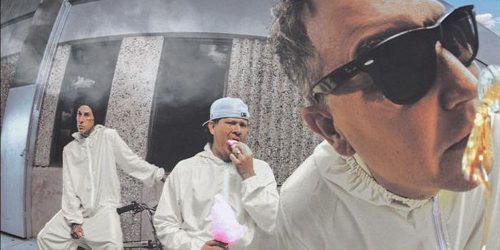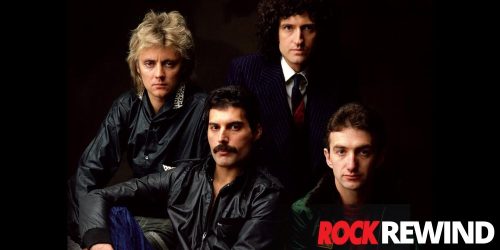Rock Rewind: The Beatles Were Short Lived But Long Lasting

The story of The Beatles begins in Liverpool, England, in the late 1950s. Four young musicians – John Lennon, Paul McCartney, George Harrison, and Ringo Starr – came together to form a band that would not only change the landscape of popular and rock music but the culture of the 20th century.
The Fab Four's journey from humble beginnings to global stardom is a fascinating tale of talent, innovation, and cultural revolution.
So let’s dive in …
From The Quarrymen to The Beatles
The roots of The Beatles trace back to a skiffle group called The Quarrymen, formed by John Lennon in 1956. The inclusion of McCartney on rhythm guitar (later bass) in 1957 and Harrison on lead guitar in 1958 marked the formation of the core trio. Their performances at local venues showcased their musical chemistry, laying the foundation for what would become The Beatles.
Stuart Sutcliffe joined as bass guitarist in January 1960. It was Sutcliff who inspired the name The Beatles as a tribute to Buddy Holly’s band, The Crickets. Buddy Holly was just one of The Beatles’ influences.
Late the same year, the band underwent further transformation with the addition of Pete Best on drums. Now a group of five, the band headed to Hamburg, Germany to take up residency at Bruno Koschmider’s nightclubs.
The Beatles' sojourn in Hamburg proved crucial to their development. Playing for hours each night in the city's vibrant club scene not only improved their musical skills but also solidified their camaraderie. They experimented with different musical styles, absorbing influences ranging from rock 'n' roll to skiffle, and even the avant-garde.
A few months after taking up residency, The Beatles started playing at a rival club. When Koschmider found out about this, he terminated the band for breach of contract. He then reported Harrison, who had lied about his age to work in Germany. Harrison was deported in late November. McCartney and Best were deported for arson one week after Harrison.
Lennon joined the first three in Liverpool by early December. Sutcliffe, however, stayed in Germany with his fiance Astrid until January 1961.
Sutcliffe Leaves The Band
Over the next couple of years, The Beatles would continue to play in London and Hamburg. In July of 1961, Sutcliffe left the band. While he left to pursue art, tension between Sutcliffe and McCartney had reached a tipping point.
“At some point he let go with an utterly outrageous comment about Astrid that hit a nerve. Stuart dropped the bass in the middle of the song, lunged at Paul, and caught him ‘with such a wallop that it knocked him off his stool.’ The fight, which had been brewing for months, was wild and fierce. Stuart and Paul rolled around on the floor, punching and stomping each other, while the other Beatles and Sheridan soldiered on. ‘They beat the shit out of each other,’ says an observer, and thrashed about until the song ended, when John, George, and Pete finally pried them apart … Nothing was settled by the fight, but as Pete Best interpreted it: "It was the beginning of the end of Stu as a Beatle." Sutcliffe realized the situation was untenable.”
— The Beatles: The Biography (2005)
Still, Stuart benevolently handed his bass to McCartney, who would become the band’s next bassist, as he departed. The gesture was symbolic of the succession though, as Paul explained, “He was only lending it to me, so he didn't want me to change the strings around."
In 1962, Starr joined the group, replacing Pete Best on drums. This solidified the lineup that would soon become one of the most celebrated and influential bands in the world.
Brian Epstein and the Management Deal
Brian Epstein, often referred to as the "Fifth Beatle," played a pivotal role in shaping the destiny of The Beatles. Born on September 19, 1934, in Liverpool, Epstein had a background in retail and a deep love for music.
He first encountered The Beatles at Liverpool's Cavern Club on November 8,1961. He was immediately struck by their talent and charisma. Recognizing their potential, Epstein became The Beatles' manager in January 1962.
At the time, The Beatles were a raw, energetic group, performing extensively in Liverpool and Hamburg but struggling to secure a record deal. But Epstein saw beyond their rough edges and recognized their immense potential.
Epstein had a clear vision for The Beatles. He believed in their talent and knew they could appeal to a broader audience. His first task was to refine their image and help them transition from leather jackets and jeans to the more polished, matching suits that would become their trademark during the early years.
One of Epstein's most significant contributions was securing a record deal for The Beatles. Despite initial rejections from major labels, Epstein's persistence paid off when he convinced George Martin, a producer at EMI’s Parlophone Records, to sign the band in 1962.
Martin, impressed by Epstein's conviction and The Beatles' potential, would go on to produce almost all of the band's studio albums.
Beatlemania: A Phenomenon Takes Flight
The early 1960s saw the explosion of Beatlemania, a phenomenon driven by the band's infectious music, charm, and charisma. It was a cultural revolution that redefined the relationship between music, fandom, and mass media, challenged social norms and sparked a new generation.
With hits like "Love Me Do," "Please Please Me," and "She Loves You," The Beatles dominated the charts and captured the hearts of millions. Their iconic hairstyles, known as the "mop-top," became a symbol of rebellion and youth culture. Their tailored suits and cheeky personalities set new trends in fashion and style.
The intensity of Beatlemania was unparalleled, with fans displaying unprecedented levels of devotion and hysteria. Concerts were marked by ear-piercing screams that drowned out the music. Fans fainted, cried, and attempted to breach security barriers just to catch a glimpse of their idols. One fan even tried to ship herself 280 miles to The Beatles in a tea chest.
In 1964, The Beatles appeared on The Ed Sullivan Show. Their appearance drew an unprecedented 73 million viewers, solidifying their stateside success. The Beatles' infectious melodies, harmonies, and charming personalities resonated with a generation eager for change.
RELATED: June 14: That time a fan mailed herself to The Beatles …
The Beatles' popularity reached a fever pitch, with their every move scrutinized and adored by a fervent global fanbase.
1964 saw a string of chart-topping hits, including "She Loves You," "I Want to Hold Your Hand," and "Can't Buy Me Love." The Beatles' success was not confined to music; they also starred in the film "A Hard Day's Night," a comedic portrayal of their own lives, which further fueled their popularity.
But this was still just the start …
Changing The Music Landscape
The Beatles had a profound effect on both the pop and rock music genres, as well as the music industry as a whole.
One of The Beatles' most significant contributions to music was their innovative approach to songwriting.
Lennon and McCartney formed one of the most prolific songwriting partnerships in history. Their ability to craft memorable melodies, poignant lyrics, and experiment with different genres set a new standard for the industry. Classics like "Yesterday," "Hey Jude," and "Let It Be" showcase their diverse songwriting skills, transcending traditional rock boundaries.
But The Beatles' music didn’t just revolutionize the pop and rock genres. They introduced innovative studio techniques into their music. From feedback to tape loops and the use of unconventional instruments, The Beatles weren’t afraid to try something new.
From the energetic pop of their early years to the psychedelic experimentation of the mid-'60s and the more mature and introspective tone of their later albums, The Beatles demonstrated an unparalleled ability to evolve while maintaining their core identity.
As The Beatles matured both musically and personally, their albums evolved into complex works of art. "Revolver" (1966) showcased their experimentation with psychedelic sounds, while "Sgt. Pepper's Lonely Hearts Club Band" (1967) is often hailed as a masterpiece, pushing the boundaries of studio production and concept albums.
Even after their breakup, their impact was not diminished. Each member pursued successful solo careers, further contributing to the evolution of rock music. The Beatles' influence is evident in the work of countless artists across genres, from pop and rock to experimental and alternative.
A Final Show
As internal tensions grew within the band, the Beatles decided to return to their roots with the "Let It Be" project. Initially conceived as a documentary film capturing the process of creating an album, the project faced challenges, and the accompanying album was delayed. In January 1969, the Beatles performed their final live show on the rooftop of the Apple Corps building in London, a fitting conclusion to their live performances.
The Let It Be album, released in 1970, featured both studio and rooftop recordings. While it showcased the band's raw energy, it also marked the end of an era as the Beatles officially disbanded in April 1970.
The Beatles Discography
Since 1963, The Beatles have put out:
- 5 live albums
- 17 box set albums
- 22 video albums
- 51 compilation albums
They’ve also released 13 studio albums …
1. Please Please Me (1963)
Please Please Me marked the debut of The Beatles, igniting a phenomenon that would forever alter the landscape of contemporary culture.
Released in March 1963, this seminal album encapsulated the exuberance and raw talent of the Liverpool quartet, setting the stage for their unparalleled ascent to global stardom. From the infectious charm of "Love Me Do" to the chart-topping "Please Please Me" and the record breaking “She Loves You,” the album effortlessly captured the band's diverse musical influences, ranging from rock and roll to rhythm and blues.
Originally, Martin wanted to record the album live at The Cavern Club. However, he changed his mind, recording the album in a single session with minimal production.
With its energetic rhythms, catchy melodies, and distinctive harmonies, Please Please Me not only showcased The Beatles' musical prowess but also hinted at what was to come, becoming the first of eleven consecutive albums to go to #1 on the UK charts.
The album remained at the top of the Record Retailer chart in the UK until is was displaced by the band’s next album.
2. With The Beatles (1963)
Released in November 1963, just a few months after Please Please Me, With The Beatles further cemented The Beatles fame.
The album was more produced than the band’s debut release and lasted for 21 weeks at #1. It also became the second album in UK history to sell a million copies. (The first was the 1958 soundtrack to South Pacific.)
With tracks like "All My Loving," "Please Mr. Postman," and "Roll Over Beethoven," the album continued to captivate audiences with its infectious melodies and energetic rhythms.
One notable aspect of With The Beatles is its distinctive album cover, featuring the band's faces half-shadowed. Epstein had called on Robert Freeman for this cover, impressed with his black-and-white shots of saxophonist John Coltrane. But it was The Beatles that requested Freeman use half-shadows, drawing inspiration from photos that Sutcliffe’s fiance Astrid had taken in Hamburg.
Harrison was recorded saying the cover was “the beginning of us being actively involved in the Beatles' artwork ... the first one where we thought, 'Hey, let's get artistic.'
The iconic image became instantly recognizable and contributed to the album's allure.
Breaking Into The US
Up until now, Capitol Records, EMI’s subsidiary in the US, was not interested in releasing any of The Beatles' work. As a result, Epstein entered negotiations with Vee-Jay. The independent label only released some of the band’s songs before the deal was voided for failure to pay royalties.
By this point, it was time to release “She Loves Me." For this, Epstein turned to Swan Records. The single, which came out in August 1963 in the UK, released in the US in September. The song did get some positive attention but didn’t chart and had very little radio play.
By this time, EMI and Epstein had finally convinced Capitol Records to give The Beatles a shot. The release of “I Want To Hold Your Hand” was scheduled for release in the US in January 1964.
But as is often the case, plans changed …
In December 1963, “She Loves Me” made its way to the top of Canadian charts. It’s fast climb led CBS to re-air a previous piece on Beatlemania in the UK, which featured “She Loves You.” The piece garnered enough attention that The Beatles next single “I Want To Hold You Hand” was rush-released on Boxing Day 1963. The song climbed to #1 by January 1964, marking the start of the British Invasion in the US.
In February 1964, The Beatles landed in New York for their live debut in the US. They were greeted by a crowd of approximately 3,000 people and had the largest audience ever recorded for an American TV program while performing on The Ed Sullivan Show. In no time at all, Beatlemania had exploded into the US and Canada.
This mass attention not only fueled The Beatles success but also opened the door for other UK acts that began debuting in the US.
3. A Hard Day’s Night (1964)
A Hard Day's Night, released in 1964, stands as a pivotal album in The Beatles' discography, coinciding with the release of their iconic film of the same name.
Recognizing The Beatles growing popularity and Capitol Records lack of interest, United Artists Records convinced its film division to make the band a deal for 3 movies. The label saw the commercial potential of soundtracks in the US.
The first movie was A Hard Day's Night was a musical comedy that follows The Beatles as they get ready for a fictional TV performance. Overall, the film received positive reviews.
The album was also a success, topping charts in Australia, Germany, US, UK, and other countries.
In the US, the album was a combination of songs from The Beatles and orchestral scores. In the UK and other countries, side one of the album was songs from the film and side two was songs that were unused songs written for the film. The title of the album itself was from an off-the-cuff comment that Starr made and Lennon shared with the film’s director.
The album's title track became one of The Beatles' most enduring hits. The song's infectious melody, coupled with its memorable lyrics, perfectly captured the spirit of youthful exuberance and romantic longing. It was also the first album to be completely written by Lennon and McCartney, with no covers.
4. Beatles For Sale (1964)
The band’s fourth studio album, Beatles For Sale, was a shift from the upbeat sound of their previous albums, delving into more introspective and somber themes. The album's title itself reflected the band's grueling schedule and the demands of their newfound fame, hinting at the toll it took on their personal lives.
The album features a mix of original compositions and covers, with tracks like "No Reply," "I'm a Loser," and "I'll Follow the Sun" showcasing the band's introspective songwriting and evolving musical style.
The album also included energetic covers of rock 'n' roll classics like "Rock and Roll Music" and "Kansas City/Hey-Hey-Hey-Hey!" which highlighted The Beatles' roots and influences.
One of the album's standout tracks, "Eight Days a Week," became an instant classic, capturing the band's trademark harmonies and infectious melodies. The song's upbeat tempo and catchy chorus belied its underlying theme of longing and devotion, reflecting the complexities of love and relationships.
Beatles for Sale was a commercial success, topping the charts in both the UK and the US and further solidifying The Beatles' status as global superstars.
5. Help! (1965)
Released in 1965, Help! stands as a pivotal album in The Beatles' discography, coinciding with the release of their second feature film of the same name. Serving as both a soundtrack to the film and a standalone album, Help! showcased the band's continued musical evolution and growing sophistication as songwriters.
The album opens with the title track, "Help!", a dynamic and energetic anthem that captures the band's signature sound. This iconic song, with its catchy melody and memorable chorus, became an instant classic and remains one of The Beatles' most recognizable hits.
Help! also features a diverse range of tracks that highlight the band's versatility and creativity. From the infectious pop-rock of "Ticket to Ride" to the melancholic beauty of "Yesterday," the album traverses various musical styles and emotional landscapes. The introspective lyrics of songs like "You've Got to Hide Your Love Away" and "I've Just Seen a Face" reveal a deeper, more contemplative side of the band, reflecting their growing maturity as songwriters.
RELATED: The Beatles released "Ticket To Ride" in the US on April 19, 1965 ...
The film, which was described as a James Bond spoof, received mixed reviews. In an interview, McCartney shared, “Help! was great but it wasn't our film – we were sort of guest stars. It was fun, but basically, as an idea for a film, it was a bit wrong.”
6. Rubber Soul (1965)
As the Beatles' popularity soared, so did their artistic ambition. In 1965, they released Rubber Soul, a groundbreaking album that showcased their evolution from pop sensations to serious musicians.
The album was recorded during a period of intense creativity, with the band members exploring new musical avenues and drawing inspiration from a diverse range of influences. The result was a collection of songs that pushed the boundaries of contemporary rock music.
One of the most notable aspects of Rubber Soul is its departure from the conventional pop structures that had characterized much of The Beatles' earlier work. Instead, the album embraced a more eclectic and varied sonic palette, incorporating elements of folk, rock, blues, and even hints of Indian music. This departure was evident in tracks like "Norwegian Wood (This Bird Has Flown)," which featured George Harrison's use of the sitar.
Lyrically, the songs explore themes of introspection, existentialism, and personal growth. Tracks like "In My Life," credited to Lennon-McCartney, showcased a newfound lyrical depth and emotional resonance. Meanwhile, "Nowhere Man" reflected a more introspective approach, with lyrics exploring themes of alienation and self-discovery.
7. Revolver (1966)
The band’s artistic growth continued with the release of Revolver in 1966.
Experimenting with studio techniques and embracing Indian classical music, The Beatles pushed the boundaries of what was possible in popular music.
The album showcased an even more experimental approach to songwriting and production. At the forefront of Revolver was the pioneering use of studio techniques, with the band working closely with producer George Martin to experiment with innovative recording methods and instrumentation.
This collaborative approach resulted in a sound that was unlike anything heard before in popular music, with tracks like "Tomorrow Never Knows" incorporating tape loops, backward recordings, and other avant-garde techniques to create a psychedelic soundscape that was ahead of its time. “Eleanor Rigby” was another notable track, recorded with only a string octet for backing sound, along with “Yellow Submarine,” which features chains, bells, whistles, and glasses from the trap room.
The bands’ songwriting also became more sophisticated. Inspiration for “Tomorrow Never Knows” was drawn from Timothy Leary’s The Psychedelic Experience: A Manual Based on the Tibetan Book of the Dead. And “Taxman” has been noted as The Beatles first foray into political statements through their music.
Upon its release, Revolver was met with critical acclaim and commercial success, cementing its status as one of The Beatles' greatest achievements.
8. Sgt. Pepper’s Lonely Hearts Club Band (1967)
1967 saw the release of Sgt. Pepper's Lonely Hearts Club Band, a landmark album that is often considered one of the greatest in the history of popular music. The Beatles, influenced by the psychedelic movement, crafted an album that seamlessly blended various musical genres, incorporating orchestral elements, innovative recording techniques, and a concept album structure.
At its core, Sgt. Pepper is a concept album following a performance by a fictional band. This concept allowed The Beatles to experiment freely with their music, pushing the boundaries of traditional song structures and incorporating a wide range of musical styles and influences. From the psychedelic rock of "Lucy in the Sky with Diamonds" to the vaudevillian charm of "When I'm Sixty-Four" and the avant-garde sound collage of "A Day in the Life," each track on the album offered something new and unexpected.
Equally revolutionary was the album's packaging and presentation. The iconic cover art, designed by pop artist Peter Blake and his wife Jann Haworth, featured a colorful collage of famous figures, including The Beatles themselves, arranged in a tableau reminiscent of a Victorian-era circus poster. This visually striking design, coupled with the album's gatefold sleeve and insert of cardboard cutouts, transformed Sgt. Pepper into a multimedia experience that invited listeners to immerse themselves fully in the world of the Lonely Hearts Club Band.
Sgt. Pepper earned the Beatles four Grammy Awards, including Album of the Year, and solidified their status as musical visionaries.
Epstein Passes Away
On August 27, 1967, Brian Epstein died of an accidental carbitol overdose. At the time, the band was in Bangor for a Transcendental Meditation retreat with Maharishi Mahesh Yogi.
In the wake of the news, the band feared for what was to come. Lennon recalled, “We collapsed. I knew that we were in trouble then. I didn't really have any misconceptions about our ability to do anything other than play music, and I was scared.” Harrison’s then-wife, Pattie Boyd, shared, “Paul and George were in complete shock. I don't think it could have been worse if they had heard that their own fathers had dropped dead.”
The loss of their manager and friend would become a contributing factor in the band’s breakup just a few years later.
Still disoriented without their manager, the band got together in September to discuss what they would do next. It was decided that they would proceed with Magical Mystery Tour, a film and soundtrack project that was already on the docket.
9. Magical Mystery Tour (1967)
The Magical Mystery Tour film was primarily recorded between September 11 and 25 and released December 1967. While the film received mixed reviews, the accompanying soundtrack featured gems like "Strawberry Fields Forever" and "Penny Lane," both of which demonstrated the band's continued commitment to innovation.
Central to the album's appeal is its eclectic mix of musical styles and influences. Drawing from a diverse range of genres, including rock, pop, psychedelia, and even classical music, The Beatles crafted a sound that was both innovative and timeless.
Beyond its musical offerings, Magical Mystery Tour also features some iconic visual imagery. The accompanying television film, directed by The Beatles themselves, combined surrealistic storytelling with inventive special effects.
While the film received poor reviews, the album continued the band’s streak of commercial and critical success.
Maharishi Mahesh Yogi's Ashram
In early 1968, The Beatles travelled to India. Here they stayed at Maharishi Mahesh Yogi’s ashram. Their time here resulted in a number of new songs that would later be used on their next album. The band was expected to stay at the ashram for 3 months to partake in a meditation course. Starr only managed 10 days before departing. McCartney left a month after that. The last two Beatles made it two months before Lennon abruptly left towing Harrison and the band’s entourage with him.
Upon leaving the ashram, Lennon wrote “Maharishi,” which was retitled “Sexy Sadie.” It was a scathing song written in response to Maharishi’s alleged sexual advances on women attending his course.
McCartney later shared, “We made a mistake. We thought there was more to [Maharishi] than there was.”
10. The Beatles - The White Album (1968)
Following their departure from India, The Beatles unveiled Apple Corps, a multimedia business venture that included a recording label, film and publishing companies and more. Magical Mystery Tour had actually been produced under the Apple Films division the previous year.
The Beatles released The Beatles, better known as The White Album, under Apple Recordings. The double LP further showcased the diversity of their musical styles. From the whimsical "Ob-La-Di, Ob-La-Da" to the haunting "Helter Skelter," the album encapsulated the band's wide-ranging creative expression.
But recording sessions for The White Album were not without drama …
By this time, the band was beginning to see its fair share of divisiveness. During the recording of The White Album, Starr quit for 2 weeks. As a result, “Dear Prudence” and “Back In The USSR” were recorded without him. The band was further aggravated by Lennon’s new romance with Yoko Ono. And Lennon was losing interest in working with McCartney.
Lennon and McCartney have both noted that sessions for the album were the start of the end for the band.
Upon its release, The White Album received mixed reviews from critics, with some praising its eclecticism and ambition while others criticized its length and lack of adventure. Nevertheless, the album was a commercial success, topping the charts in both the UK and the US and spawning several hit singles.
11. Yellow Submarine (1969)
In July of 1968, the animated film Yellow Submarine premiered. The film was accompanied by the release of an album of the same name in January 1969, as part of the 3-film contract the band had with United Artists Records.
The Yellow Submarine album was made up of orchestral recordings from the film along with 8 tracks by The Beatles. This included “Yellow Submarine” and “All You Need Is Love,” which were previously released.
The album was not one of the band’s most successful projects. Still, it reached #1 in Canada and top 5 in the UK and US.
12. Abbey Road (1969)
While Abbey Road was released before Let It Be, it was actually the last recorded work by The Beatles.
The making of this album came from McCartney’s suggestion to make an album the way the band used to, before the tensions that began with The White Album. George Martin agreed with the idea but said that everyone, specifically Lennon, had to allow him to produce the album like their earlier work. Lennon, however, rejected the request.
The result was a compromise featuring one side devoted to Lennon with unrelated and distinct songs. The other side was a medley of songs that resembled the theme driven approach used for St. Pepper.
According to McCartney, Starr and Martin, the sessions went well. McCartney was quoted saying, “we did actually perform like musicians again.” But even with the camaraderie, Lennon has shared that he disliked the album, saying that McCartney’s side was music for “grannies to dig” and “just bits of songs thrown together.”
While the internal and critical reviews of the album were mixed, Abbey Road has been marked as Harrison’s best work with "Something" and “Here Comes The Sun,” showcasing his growing skill as a songwriter.
Beyond its musical contributions, Abbey Road is renowned for its iconic cover art, which features the four band members walking across the zebra crossing outside Abbey Road Studios. This simple yet striking image has become one of the most recognizable and imitated album covers in music history, symbolizing The Beatles' enduring legacy and influence.
Released just months before the band officially disbanded, Abbey Road remains a testament to The Beatles' unparalleled creativity, innovation, and lasting impact on popular music. I
13. Let It Be (1970)
While Let It Be was the last studio album released by The Beatles in 1970, it was actually recorded before Abbey Road. The album, accompanied by a documentary film of the same name, was marred by the internal conflicts and creative tensions that had plagued The Beatles during its recording.
Originally intended as a return to their roots with a live-in-the-studio approach, the sessions for the album were fraught with disagreements and frustrations, ultimately leading to the band's breakup shortly after its release.
Lennon described the sessions as “hell” and “the most miserable.” Harrison called them “the low of all time” and Martin said it was “not at all a happy recording experience.”
The tensions between McCartney and Lennon got so bad that Harrison left for 5 days. He only promised to come back if the band would give up on the idea of doing a live performance and head to Apple Studio to complete the album. Everyone agreed and recording continued.
In January 1970, after the release of Abbey Road, Harrison, Starr and McCartney recorded one last song – “I Me Mine.” Lennon, who was in Denmark, did not take part in its recording.
McCartney Leaves The Beatles
Once recording for Let It Be was complete, record producer Glyn Johns was given the responsibility of pulling together an album. The band had washed their hands of it and gave Johns creative freedom. However, Allan Klein, who took on the role of business manager following Epstien’s passing, rejected Johns’ submission. Instead, the project was handed to Phil Spector, an American producer who had previously worked with Lennon.
Spector remixed and edited much of the material including adding an orchestra to “The Long And Winding Road”. McCartney did not like the final product and demanded that the alterations get reversed. No changes were made and on April 10, 1970 McCartney announced that he would be leaving The Beatles.
Let It Be was released the following month. Its title track stands as one of The Beatles' most beloved and enduring songs. Written by Paul McCartney and inspired by a dream he had about his late mother, “Let It Be” is a message of hope and resilience that struck a chord with listeners around the world, making it an instant classic.
The accompanying film was released later the same month. It went on to win an Academy Award for Best Original Score, though the film itself had mixed reviews.
In hindsight, Let It Be serves as a poignant reminder of the complex dynamics that defined The Beatles' final years as a band. Despite the challenges they faced, the album stands as a testament to the impact they had on popular music.
In 2003, Let It Be... Naked was released, featuring stripped-down versions of the album's tracks without Phil Spector's orchestral overdubs, offering listeners a new perspective on these classic songs.
Legacy and Impact: Beyond the 20th Century
The Beatles' influence extends far beyond their active years. Their timeless melodies, innovative studio techniques, and cultural impact have left a permanent mark on subsequent generations of musicians.
More than five decades since their breakup, The Beatles continue to inspire and influence generations of musicians, ensuring their legacy remains an integral part of the ever-evolving world of rock music.
Snag Our Newsletter
Hit that button like you’re pressing play on your favourite track. get exclusive content, stories, and news.









